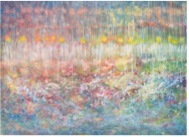"The brain is a world consisting of a number of unexplored continents and great stretches of unknown territory." - Santiago Ramón y Cajal
AUTISM. This word taken from the Greek root auto meaning "self" suggests that within each individual diagnosed with having the neurodevelopmental disorder exists unique characteristics, intelligences and talents. Years of research on the wide array of symptoms associated with autism have advanced the range of disorders of the condition to be labeled as Autism Spectrum Disorder (ASD). Depending on what symptoms an individual displays, he or she will fall on a different place on the spectrum.
We have come a long way with understanding the complexities of ASD, but perhaps the most important aspect to recognize is the need to look into the unique minds of children on the spectrum. We need to understand that behavioral treatment and neurology-based prescriptive intervention must be personalized. No longer can generalizations be made about children diagnosed with ASD and the type of treatment that they need. The strengths and talents of autistic children are extremely relevant, as heterogeneity exists in the neurology and brilliance of each one of them. Therefore, we must approach their education, instruction and treatment based on the brain-based information we can gather from the child.
This can best be illustrated through the amazing artistic ability of Iris Grace, a well-known, 5-year-old girl with ASD that has been producing astonishing Monet-style landscape paintings since she was 3 years old. Although just now learning to talk, Iris has artistic talent well beyond her years. So, how does a mind, such as mine, which can barely produce a drawn stick-figure man (my "artistic" attempt below), understand and guide the mind of a 5-year old girl that paints like Monet (watercolor painting below, by Iris Grace)?
The theory of multiple intelligences, developed by Howard Gardner, Ph.D., Professor of Education at Harvard University, relates to a person's unique aptitude set of capabilities and ways they might prefer to demonstrate intellectual abilities. The following are a sampling of Gardner's different theoretical intelligences that might best relate to individuals in the autism spectrum:
- Verbal-linguistic intelligence: Well-developed verbal skills and sensitivity to the sounds, meanings and rhythms of words
Simply stated, we must discover what makes each child "tick." How can I, Dr. "Stickman," and other doctors, therapists, teachers and parents, awaken the senses and open the unique minds of children, such as the talented Iris Grace and other children with ASD, to allow us to reach them? For within each child lays strengths and individual intelligence. It is the job of the therapists and doctors to discover what they are and prescribe an intervention and personalized behavioral treatment based on these neurology-based discoveries. It is the job of the teachers to use these discoveries to teach them in an effective way that they will understand and respond to. This is a new era in the field of autism services. I am confident that as a result of neuroanatomical finds and research related to brain-behavior relationships, we will be incrementally more prepared to guide the lives of the beautiful children with Autism Spectrum Disorder.

